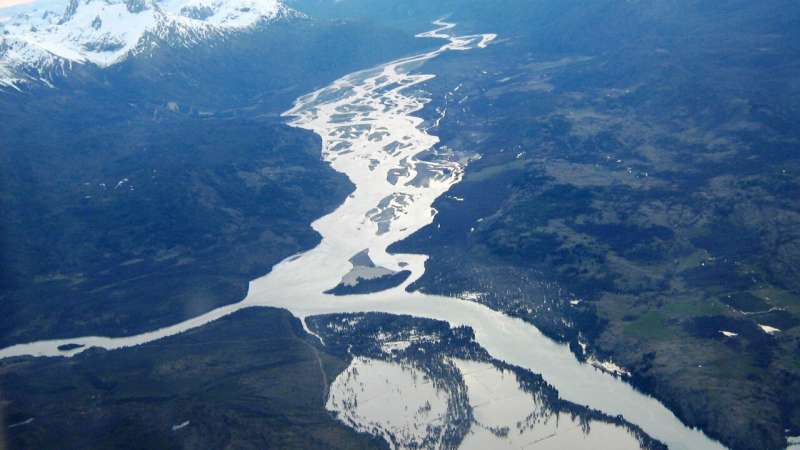Outbursts from Lake Cachet 2 in 2009/DGA, Chile. Credit: CENIEH
Catastrophic floods due to the emptying or rupture of glacial lakes in Chilean Patagonia have taken place cyclically since the last glacial maximum 10,000 years ago. Nevertheless, the magnitude of these mountain 'tsunamis' has declined over time, according to a paper published in the journal Quaternary Science Reviews in which scientists from the Centro Nacional de Investigación de La Evolución Humana (CENIEH), the Consejo Superior de Investigaciones Científicas (CSIC) and Royal Holloway University of London (RHUL) were among the participants.
By studying sediments and using hydrological models to calculate volumes, this work has shown that the amounts discharged by glacial lake outbursts declined by three orders of magnitude from the last glacial maximum to the recent events between 2008 and 2017.
Luminescence Dating
The largest glacial lake outburst flood took place 9,000 years ago, according to dating conducted by the CENIEH Luminescence Laboratory. This floodwater reached heights of perhaps 70 meters, with a volume of 110,000 cubic meters/second (m3/s), similar to that caused by flooding in the River Amazon.
"Dating these floods has been fundamental to matching them to the advance and retreat of glaciers, and seeing how they relate to the climatic changes of recent millennia," says Alicia Medialdea, a researcher on the CENIEH Geochronology Program.
Glacial recession
The scientists identified a total of up to 86 catastrophic floods that took place in five phases coinciding with the end of neoglacial periods, when glacial retreat weakens the ice. Another period of major floods was about 6,000 years ago, with flows of up to 20,000 m3/s.
Standing out among the more recent periods is one 600 years ago with 10 outbursts discharging up to 6,000 m3/s (almost twice an extraordinary flood in the River Ebro). In comparison, the recent outbursts from Lake Cachet 2, with a total of 27 events between 2008 and 2017, drained about 3,800 m3/s, posing a grave risk to the settlements near the River Baker in the Aysén Region of Chilean Patagonia.
This study is important in view of the forecasts in a 2019 report by the United Nations IPCC (Intergovernmental Panel on Climate Change) which warned of the effects of retreating glaciers. One of these consequences is catastrophic outbursts from lakes impounded by ice, a phenomenon that became more common in Patagonia at the start of the twentieth century, and this pattern has been repeated during the second decade of ours.
"Our study demonstrates that recent floods caused by glacial lake outbursts are not exceptional in terms of their size if we look at the millennial record of these events," points out Gerardo Benito, a CSIC researcher at the Museo Nacional de Ciencias Naturales. Even so, these outbursts trigger mountain 'tsunamis' and comprise an important risk to socioeconomic activities in the Aysén Region.
More information: Gerardo Benito et al. Declining discharge of glacier outburst floods through the Holocene in central Patagonia, Quaternary Science Reviews (2021). DOI: 10.1016/j.quascirev.2021.106810
Journal information: Quaternary Science Reviews
Provided by CENIEH
























